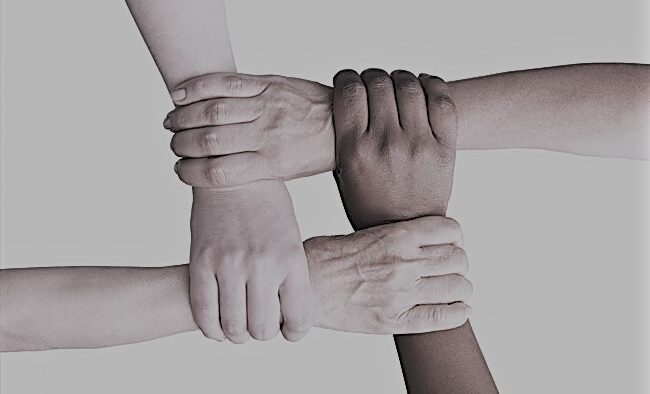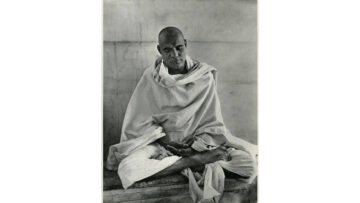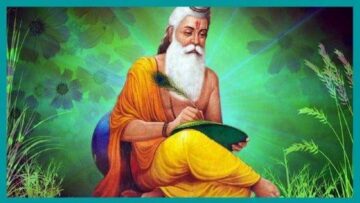Redefine success – Developing champions in life, win or lose. Winning is not the only measure of success. That process produces broken human beings. We can create champions in life without compromising human spirit.
~Valorie Kondos, at Ted Talk, “win at all costs.”
Introduction
Businesses – big or small strive to have each of their employees perform to the best of their ability with 100 percent engagement. But the statistics show that the employee engagement rarely goes beyond 20%.11
In most medium to large organizations, the emphasis is on serving their customers with seamless services. This is referred to as Digital Transformation. Digital Transformation has two segments – Digital and transformation – but over 80% of companies agree that they see it as their technology department’s job to make the digital transformation work. Technology is only a tool to enable transformation. It can be termed as “Digitally supported efficiency, not the transformation.” We are going to look at the “Transformation” part of the business. This paper focuses on how we can transform an organization where most people are 100% engaged.
Most of the organizations realize that the impersonal relationship of their employees with their work is the issue. So, the entrepreneurship mindset has been in great demand for about a decade now. Here we will look at the most successful organization of human design and order that the oldest civilization of Sanatan Dharma had adopted. It paid great attention to a person’s soul makeup and what his/her needs are to be in flow and progress based on innate qualities, tendencies, and the ultimate goal of the person. This balanced inner science and outer organization have helped the whole society to be in seamless flow and harmony during the most glorious ages in the history of humanity.
Sri Aurobindo said, “The cause of India’s decline was the practical disappearance of the Kshatriya and the dwindling of the Vaishya. The whole political history of India since the tyranny of the Nandas has been an attempt to resuscitate or replace the Kshatriya. The Vaishya held his own for a long time, indeed, until the British advent by which he has almost been extinguished.”3
We will discuss the qualities and tendencies of a person based on innate qualities (gunas) and their expressions in four classes of hues (Chaturverna). We will make an attempt to understand what Sri Aurobindo means by Brahmin becoming Shudra in today’s context. Clarity of understanding based on these concepts will help us understand where we stand, where we are headed, and what we need to do to keep sailing in the right direction.
Business Paradigm change – People at the center
ब्राह्मणोऽस्य मुखमासीद् बाहू राजन्यः कृतः।
ऊरू तदस्य यद्वैश्यः पद्भ्यां शूद्रो अजायत॥
brāhmaņosyamukhamāsīdbāhū rājanyahkŗtah |
urū tadasyayadvaiśyahpadbhyāmśudroajāyata ||
His head is the Brahmin, the wise and the learned, and his arms became Rajanya, the king, the man of velour; what were his thighs they were made into Vaishya, the man of the transaction, the tradesman and the dealer and the agriculturist, even as his two feet turned into Shudra, the laborer, and the artisan and the doer of perfect works. [Purusha Sukta 12]
If the Brahmin becomes the Shudra, then the lower instinct of the serf and the laborer becomes all in all, the instinct to serve and seek a living as the one supreme object of life, the instinct to accept safety as compensation for lost greatness and inglorious ease and dependence in place of the arduous of high aspiration for the nation and the individual.3
The above statement of Sri Aurobindo very powerfully identifies the reason for today’s disharmony of work-life and individual dissatisfaction – ultimately leading to low employee engagement.
Be it a manufacturing facility or a service business with the latest and the best breed of technology, it is eventually run by the people (employees), sold to the people (customers), and is used by people (end-user or consumer). When a whole person is well aligned with his/her tendencies, upbringing, training, and opportunities, we have a lot better chance of happy and engaged employees, organization, and society. In this context, let us look at the human capital aspect of the equation in an organization (company, government, society, nation, or the world).
Each person has in him something of his own – some characteristic principles and an innate power of his nature. So, for a person, all actions must be determined from within because for each man, there is the efficient power of his spirit that creates the dynamic form of his soul in nature to express and perfect it by action. This inner power makes it effective in capacity and conducts his work which defines his true Karma. This Karma points him to the right way of his inner and outer living and is the right starting point for his further development. Whatever work a man does, if done according to the law of his being, the truth of his nature can be a very effective means of his personal growth and the growth of the organization.
यतःप्रवृत्तिर- ्भूतानांयेनसर्वमिदंततम्।
स्वक- र्मणातमभ्यर्च्य- सिद्धिंविन्दतिमानवः॥।।18.46।।
The inner force is much stronger and is constantly shaping the outer reality unceasingly. It is like the river within which knows the direction and extent of its flow. Helping align inner actions while paving the way and merging into the ocean or to keep trying really hard to take it in some other direction and watering your plants with it. This only creates friction, delay, frustrations, disease, and of course, serves neither the person nor the community. This aligned action contains in itself the principle of its own success, the principle of the Swabhava and Swadharma.
Bharat’s glorious seers have organized and defined natural human tendencies (or Swabhava) and, based on the natural tendencies of a human, defined the right duties (Swadharma) for the person. Aligning, upbringing, training, and opportunities to someone’s natural human tendencies (or Swabhava) brings out the best in the person and also helps in the growth of the person. It provides solutions to organizations that are conducive to individuals, organizations, societies, and nations over a period of time.
Human Traits or Gunas
Prakriti, the unmanifest potential, inherently has three qualities. These manifest in various ways, causing a wide range of differences. Everyone and everything in the creation is made up of three qualities (guṇas). sattva, rajas and tamas. The permutations and combinations of these three create a wide variety in the world.5 These are the main characteristics of these three gunas.
Satvick (Knowledge): Faith, love, brilliance, understanding, remembrance, alertness, peace, compassion, sensitivity, selflessness, and the like.
Rajasic (Activity): Dynamism, ambitions, restlessness, impatience, arrogance, doubt, anger, passion, confusion, greed, and the like.
Tamasic (Inertia): Carelessness, forgetfulness, sloppiness, sleepiness, dullness, wickedness, laziness, and so on.
These three qualities of prakṛiti pervade everything in the creation. However, when one quality is predominant, the other two lie dormant. Different qualities gain dominance at different times, but one of them generally dominates each personality.
Hence, we may categorize people as sāttvika (sattva-dominant), rājasika (rajas-dominant), and tāmasika (tamas-dominant). Everything we do – the way we sit, eat, walk, talk, work, or behave – reflects the quality or mood of the mind. For example, in a sāttvika mood, we eat unhurriedly and neatly; in a rājasika mood we eat hurriedly and barely chew the morsels; while in a tāmasika mood we eat in a sloppy and lethargic manner. What do we want to be? What is the ideal combination of the guṇas we should strive to have?
There is a great deal of emphasis given to the inner truth and not as much to the outer form in Bhagwat Gita that provides spiritual significance and power. This spiritually-aligned work is referred to as Swadharma. But in recent times, too much emphasis has been given to outer social order that broke nature’s law as described in the Bhagwat Gita:
चातुर्वर्ण्यंमयासृष्टंगुणकमववर्भागशः।
तस्यकतावरमविमांवर्द्ध्यकतावरमव्ययम्॥ (Gita 4.13)
cāturvarṇyaṃmayāsṛṣṭaṃguṇakarmavibhāgaśaḥ,
tasyakartāramapimāṃviddhyakartāramavyayam.
The fourfold order was created by Me according to the divisions of quality and active function. Know Me for the doer of this (the fourfold law of human workings) who am yet the imperishable non-doer.
Sri Aurobindo discusses in much detail in his work, Incarnate Word9, that the ultimate salvation or Ananda cannot enter into the cosmic dynamism unless the fourfold soul-force has established itself here in its perfection. That is the long preparation to be affected by the practice of Chaturvarna before this transformative change can take place. It is the human obligation that must be fulfilled. There is no national life that can be perfect or sound without the Chaturvarna. Sri Aurobindo wrote a hundred years ago: “The life of the nation must contain within itself the life of the Brahmin,— spirituality, knowledge, learning, high and pure ethical aspiration, and endeavor; the life of the Kshatriya,—manhood and strength moral and physical, the love of battle, the thirst for glory, the sense of honor, chivalry, self-devotion, generosity, the grandeur of soul; the life of the Vaishya,—trade, industry, thrift, prosperity, benevolence, philanthropy; the life of the Shudra,—honesty, simplicity, labor, religious and quiet service to the nation even in the humblest position and the most insignificant kind of work.
Awareness of gunas and their combinations would allow organizations to enhance total work culture and human capital development by highlighting and promoting desired traits (guṇaādhāna) and reducing or managing its undesirable traits (doṣaapanayana). Swamini Vimalananda describes 23 aspects of gunas in her book, “Not Too Loose, Not Too Tight, Just Right.”






Table: 1
For example, based on the assessments, identified areas of strength and weaknesses can be identified for an individual or a group of individuals in any department of an organization. This not only helps facilitate change management plan much more efficiently but also aligns the right training that aligns with the organization’s vision. This alignment of work with individuals’ innate tendencies provides a person a much better growth plan and motivation for an individual.
When people take to professions (karmas) according to their qualities (gunas), it is like fish taken to the water. They have a natural inclination towards their jobs and so love what they do. The exact opposite is also possible and every shade in between. Understanding Verna also helps a person or a company to recognize the areas that need to be worked upon.
Combinations of tendencies in people: The Verna System
Structure and functional understanding of tendencies is explained in the Chaturverna. We are talking about the “Verna, which literally means ‘hues.’” In the recent past, it got confused and misrepresented with “Jati.” Jati represents the family tradition that a person is born into.
There are four Verna systems that define a person’s natural tendencies. They are called Chaturverna (Chatur means four, and Verna is hue). Most people have some level of all four tendencies, but mostly one set is dominant.
This fourfold categorization of human beings on the basis of qualities (gunas) are4:
Brahmin: Approximately 70% Sattva + 20% Rajas + 10% Tamas
Ksatriya: Approximately 70% Rajas + 20% Satva + 10% Tamas
Vaisya: Approximately 70% Rajas + 20% Tamas + 10% Sattva
Sudra: Approximately 70% Tamas + 20% Rajas + 10 Sattva
Table-2
It should, of course, be understood that the proportions are approximate and not to be taken literally. They vary in different people but what is noteworthy is that all of us have each of the three qualities. No human being, however good or bad, can claim to have only one or two of the three. Also, the proportions of these gunas may vary in us at different times and stages in life. It is possible that a lethargic and laid-back person may, at a time in his life, become dynamic and a go-getter.
Shudra dominance
Chaturverna is not a fundamental division but stages of self-development in our growth. Verna is shaped by birth, upbringing, training, traditions, and opportunities. Sanatan Dharma accepts continuity of life through different births and understands that a soul takes birth in its chosen family. The topic of birth is beyond the scope of this paper’s discussion, but it is worth mentioning that at the time of external aggression on our rich civilization, the Kshatriya – the power of passion and dynamism, dwindled; the Vaishya – the power of material prosperity and donation, dwindled; the Brahmin and Shudra were left. The inevitable tendency of the Brahmin was to take flight and degenerate, and in this process, while keeping some outwardly signs of being a Brahmin he tended to gravitate towards Shudrahood. At this stage, to hang on to the traditional pride, the families hung on to the Verna of the parents, and a confused version of Verna came into existence that was based on birth (jati). The Britishers connivingly replaced the word ‘Verna’ with “Caste.” It should be noted parenthetically that there is no concept of caste in the Sanatan Dharma. Another gross distortion that was forced upon by Britishers on India, that was unheard of, was that only male children could be the heir of the power position. This pushed women out of the Verna system giving rise to a host of social evils like casteism and dowry, with women ending up as second class citizens in the society.
Along with the economic division, there existed the association of a cultural idea that gave each class its religious customs, its law of honor, ethical rule, suitable education and training, type of character, family ideals, and discipline.
Chaturverna provides an understanding and solutions for balanced growth, balanced individual, balanced organization, and balanced societies.
Sri Aurobindo says, “When the tendency based Chaturvarna disappeared that led to an utter and resulting chaos. In the Kaliyuga, the Shudra is powerful and attracts into himself the less vigorous Brahmin, as the earth attracts purer but smaller bodies, and the brahmatéja, the spiritual force of the latter, already diminished, dwindles to nothingness. For the Satya-yuga to return, we must get back the brahmatéja and make it general.” 3
The four functions are still inherent in the life of all normal communities, but the clear divisions no longer exist anywhere; like in India into more fluid order that is a confused and complex social rigidity and economic immobility degenerating towards the chaos of castes.
Contemporary Chaturverna
A person’s inner makeup has included intellectual, ethical, and spiritual growth as the central need of the person and the societies; it is a system of relations that provides it with its needed medium, field, and conditions and with a nexus of helpful influences.8
The fourfold function of social man was considered as normally inherent in the psychological and economic needs of every community and therefore a dispensation of the Spirit that expresses itself in the human corporate and individual existence. 8
Chaturverna provides a structure to create an orderly yet flexible system to help the individual gain the appropriate educational, ethical, and moral training suitable to his or her inner temperament, aptitude, and nature. In the context of today’s corporation, functional Chaturverna can be defined as:
Brahmin – Inventor (of product, services, process).
Kshatriya – “C” level executives- CMO, CIO, CTO, CDO, CBD. etc.
Vaishya – Sales Staff, Accounting, HR, Marketing,
Shudra – Repetitive skilled workers that are not inventors, worriers, traders, or chief executives. This is the largest group in a corporation that makes up employees in factory or farm workers, data-entry operators, clerks, and bookkeepers. They get training to do their work efficiently.
But look at the table-1 and table-2, it is clear that the ultimate goal of an individual is to achieve, Brahm-tej in every aspect. So, defining as where one stands and taking steps at the individual level, organization level, and government level can ensure happy, prosperous, and progressing societies.
It can be identified as where one stands in different aspects of gunas and can work on planning his/her future self.10
| Aspect | Sattvic | Rajasic | Tamasic |
| Mental ability | Discriminative | Manipulating facts | Obscuring facts |
| Conviction | Unwavering | Filled with Doubts | Blind faith |
| Ideals | Lofty | Glamorous | Vulgar |
| Conversation | Samvad/ about ideas | Vaad/ about events | Vivaad/ about people |
| Quality of Life | Inspiring | Competitive | Wasteful |
| Mental ability | Discriminative | Manipulating facts | Obscuring facts |
| Conviction | Unwavering | Filled with Doubts | Blind faith |
| Ideals | Lofty | Glamorous | Vulgar |
| Conversation | Samvad/ about ideas | Vaad/ about events | Vivaad/ about people |
| Quality of Life | Inspiring | Competitive | Wasteful |
As discussed earlier that Gunas drive tendencies in a person. Tendencies aligned with work create the best possible trajectory of growth for a person, organization, and society.
Redefining success for an individual and organization.
In recent times, we have had a new definition of success. For an individual it includes a rewarding career, economically upscale lifestyle with house, cars, travel, and kids’ education being taken care of. In a way, there is nothing wrong with it as these are the basic needs that must be taken care of. But in the quest of redefining success, the internal spiritual growth of an individual has been completely ignored. A coalescence of internal as well as the external growth can alone bring about peace and harmony, not only for an individual but also for the society at large.
A narrow-minded approach of honing our skill sets just to perform well at our jobs, get a promotion, and earn more money, recognition/respect and climbing the corporate ladder, while ignoring our internal needs, circumstances, or challenges only breeds dissatisfaction and hinders growth, which ultimately reflects in the performance of the organization.
This climbing of the corporate ladder and getting caught in the rat race has forced most of the population to become Shudras. Shudras are defined as skilled workers who are not inventors, worriers, traders, or chief executives. This forms the largest group in any corporation that makes up employees in factory or farm workers, data-entry personnels, clerks, and bookkeepers. They get training to do their work efficiently—nothing wrong in being a Shudra; that is where most of us start. Irrespective of the job function that one performs, there is an inherent challenge in satisfaction and internal growth for the person that also hurts the organization. Shudra has the dominance of tamasic Guna (Inertia-Carelessness, forgetfulness, sloppiness, sleepiness, dullness, wickedness, laziness, and so on). This aspect of gunas does not allow Shudra to genuinely rise up in their own life or contribute much to the organization’s growth, but at the same time, once we have understood the concepts of Guna and Verna, things can be improved with the right training, expectations, and opportunities.
The developmental phases go from Shudra’s tendencies of taking care of the basic needs to Vaishya, the active man, more dominant will with more sattvic mind predominates. Vaishya progresses into Kshatriya that brings useful creation. Kshatriya progresses into Brahmana that brings innovation, thought leadership, and steers the society into a more prosperous, harmonious space for all.
There is always in human nature, something of all these four personalities developed or undeveloped, wide or narrow, suppressed or rising to the surface, but in most men one or the other tends to predominate and seems to take up sometimes the whole space of action in nature. And in any society, we should have all four types, – even, for example, if we create a purely productive and commercial society such as modern times have attempted, or for that matter, a Shudra society of labor. It attracts the most modern minds and is now being attempted in one part of Europe and advocated in others.3
These are quite outward things, and if that were all, this economy of the human type would have no spiritual significance. Or it would mean at most, as has been sometimes held in India, that we have to go through these stages of development in our births; for we must perforce proceed progressively.
Through the tamasic, the rajaso-tamasic, the rajasic or rajaso-sattvic and finally to the sattvic nature, we ascend and fix ourselves in an inner Brahminhood, brahman and then seek salvation from thereon. But in that case, there would be no logical room for Gita’s assertion that even the Shudra or Chandala can, by turning his life Godwards, climb straight to spiritual liberty and perfection. This means each individual, no matter what profession, can grow internally, contribute to society, and have much peace in his life and thereafter. In other words, success needs to be redefined and be one that is inclusive of a person’s needs and their social implications.
Swami Vivekananda brings out the yogic aspect of the Chaturvarna in another beautiful manner. When he speaks of Jnana Yoga, Raja Yoga, Bhakti Yoga, and Karma Yoga, he is also suggesting the methods available for the Divine’s realization for the corresponding type or quality or the soul’s cast playing its role in this present mode of universal manifestation. That is the marvelous truth of Chaturvarna. These four are the Yogas for the four types of the souls, the fourfold soul-qualities, swabhava; these are Jnana for the Brahmin, Raja for the Kshatriya, Bhakti for the Vaishya, and Karma for the Shudra. Each one of them is a process for the realizations of the self, and there is nothing inferior or superior of one over the other. It also must be understood that one cannot be complete without the other three. For instance, Jnana finds its fullness when it is also accompanied by Raja and Bhakti and Karma.
Conclusion
Social classes are not an economic ladder to climb, but everyone contributes to sustain a functioning society. Social classes are more like a tree. Each part is important for the full functioning of the society. Each part needs appropriate nurturing in its place.
Economic classes forced Kshatriya and Vaishya to disappear, and Shudra subdued Brahmana – disturbing the equilibrium in person, family, society, corporations, and countries. All actions must be determined from within because each man has in him something of his own, some characteristic principles and inborn power of his nature. That is the efficient power of his spirit that creates the dynamic form of his soul in nature, and to express and perfect it by action, to make it effective in capacity and conduct his work is his true Karma. This Karma points him to the right way of his inner and outer living and is the right starting point for further development. Whatever work a man does, if done according to the law of his being and the truth of his nature, it can be a very effective means of his personal growth and organization’s growth. Once we understand the Guna-based tendencies, we are in a better position to build a healthier society with satisfied people.
Work alignment is needed with the swabhava – perfection, spiritual growth, satisfaction. But work that is not naturally one’s own, even though it may be well performed and even though it may look better from the outside when judged by an external and mechanical standard or may lead to more success in life, is still inferior as a means of subjective growth precisely because it has an external motive and a mechanical impulsion.
Indian seers have defined three categories of gunas in a continuum. We all fall in some combinations of these gunas. Understanding these gunas will help us navigate our own personal growth.
Defining swabhava of four varnas: Four varnas are defined in their swabhava. swabhava determines swadharma and not the otherwise. Swabhava comes from birth/genetics, upbringing, and opportunities.
These tendencies can be cultivated to the four proper aims of human life (Dharma, Artha, Kama, and Moksha). The four puruṣārtha are the need of every human that yearns to achieve equanimity of Chitta. Understanding these timeless scientific principles is sure to expedite the vision of Dharma in the corporate world. Discussions on these four aims of human life (puruṣārth) are out of scope for this paper but an important topic to learn as well.
References:
- Valorie Kndos, at Ted Talk “win at all costs.” Former UCLA Women’s Gymnastics Coach.http://t.ted.com/wdvoBIS
- RY Deshpande.“Four Powers in the Cosmic Dynamics.”The lights of Supreme journal, by Alagesan, May 16 2015. https://savitri.in/blogs/light-of-supreme/four-powers-in-the-cosmic-dynamics-by-ry-deshpande-11
- Sri Aurobindo, “Karmyogin.” Volume 8. p. 19-20. The Complete Works of Sri Aurobindo. Sri Aurobindo Ashram Publications Department.
- SwaminiVimlananda, Conflicts and Confusions. (2018). (n.p.): Central Chinmaya Mission Trust. P. 2-4.
- Vimalananda, Swamini. Not Too Loose, Not Too Tight… (p. 11). Central Chinmaya Mission Trust.
- Sri Aurobindo, “Essays of Gita.” p.507-p.525. Swabhava&Swadharma,
- ShremadBhagwad Gita, Chapter 18, Verse 46
- G H Visweswara, “Chaturverna” p.9. Gita on Chaturverna.
- Sri Aurobindo, “The Incarnate word.” Soul-Fource and the Four Fold Personality
- Rajesh Kamath, talks at “Chanakya Consulting Insight.
- eBook, “Digital Transformation Strategy.” 7 Emerging Trends that will define 2021.Creatio. https://www.creatio.com/page/ebook/digital-transformation-strategy-7-emerging-trends-that-will-define-2021
Glossary:
- Gunas: Innate qualities
- Chaturverna: four shades of tendency combinations
- Karma: Soul aligned calling of work or profession.
- Prakriti: Unmanifested potential
- Swabhava: Natural human tendencies
- Swadharma: right duties based on the natural tendencies of a human
Image Credit: imseocoach.com
Disclaimer: The opinions expressed in this article belong to the author. Indic Today is neither responsible nor liable for the accuracy, completeness, suitability, or validity of any information in the article.







